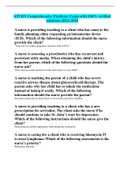Samenvatting
World Art and Beyond - Samenvatting van collegeaantekeningen Universiteit Leiden BA Kunstgeschiedenis jaar 2
- Instelling
- Universiteit Leiden (UL)
Deze samenvatting van collegeaantekeningen van het vak World Art and Beyond is geschreven in het Engels. Het vak werd gegeven door Dr. Stephanie Noach. De samenvatting is erg compleet: naast alle belangrijke informatie zijn ook alle belangrijke kunstwerken met bijbehorende afbeeldingen toegevoegd.
[Meer zien]













